-

-
- 2018-2019 Preseason:
Fan Bereavement Over A NFL Crowning Achievement?
-
 -
-
-
This edition of "The Tortured
Cowboys Fan" has also been published by the fine folks at
Sports TalkLine.
-
-
 -
-
-
September 2, 2018 At 4:00 AM CST
By Eric M. Scharf-
- Roquan Smith finally ended his 29-day holdout when he signed a
4-year, $18.4M contract with the Chicago Bears on Monday, August
13th, 2018. It was a momentous occasion for regional
prognosticators, perpetually hopeful Bears fans in search of their
next great linebacker, and fantasy footballers eager for something
new to discuss.
This story – at first glance – was a quick read. The Bears drafted a
first-round talent whom they see as a key piece to the puzzle that
inches them significantly closer to their old reputation as the
“Monsters of the Midway.” The rookie’s handlers felt equally
determined that Smith’s $11.5M signing bonus needed to be
significantly closer to setting a hands-off precedent in the face of
the NFL’s new-for-2018 targeting rule. The Bears – to a good degree
– acquiesced, and Roquan’s path to payment may prove a useful
contract negotiation tool.
The new rule – approved in March of this year – is designed to
fortify other existing player-safety measures, and it mimics a
similar game day rule established by the NCAA. When ANY offensive or
defensive player lowers his head to initiate contact with an
opposing player, there will be an automatic 15-yard penalty. While
it seems wise of the league to have avoided specifying “crown of the
helmet” – even though such penalties in preseason have thus-far been
levied at light speed – a replay delay of epic proportions may still
be in the regular season offing.
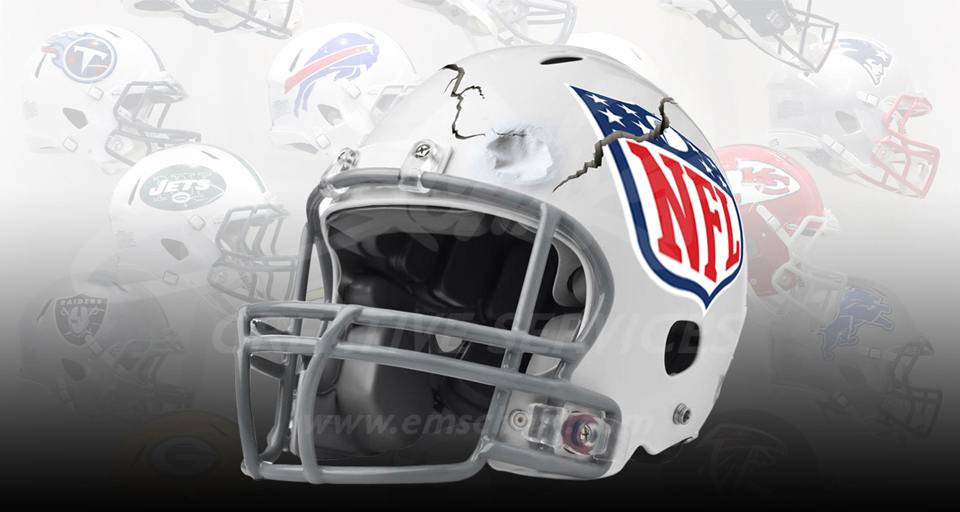
-
- Nonetheless, the salary cap era – along with first-ever,
contract-acknowledged signing bonuses – was introduced to the NFL in
1994. After surviving the San Francisco 49ers’ brutal exploitation
of early signing bonus loopholes, the concept of partial,
conditional guarantees of signing bonuses would slowly develop over
the last 24 years. This would lead to modern day negotiating
conditions in which representatives of first round draft picks now
feel (even more) compelled to play chicken with what they hope is an
organization more in-need than the players they represent.
“What is so incredibly different about this? Players hold out all
the time – in the NFL and other professional team sports – demanding
more money, more reasonably-achievable incentives, greater
front-loaded contract guarantees over fewer years. Why should anyone
care?” you ask.
This story – for discerning football fans – is anything but brief.
Roquan Smith is merely the newest bit player in the latest act of an
NFL screenplay that has been unfolding since August 20th, 1920. The
challenge goes much deeper than any demands for protection over a
given player’s signing bonus from that player’s temporary or
permanent inability to perform his job . . . without (increasingly)
going awry of the NFL’s player-safety rules like a practice squad
slob.
Examples So Ample
The NFL had long-celebrated incredible kill shots – applied both
offensively and defensively – to devastating, even career-ending
effect. “NFL Films” – among its decades of rich content – has more
than a few player-punishing presentations. Fans (most but not all)
love to see cross-eyed collisions – especially following turnovers –
between aware and seemingly oblivious players (who are repeatedly
coached to “beware the drivel and keep your head on a swivel”).
Kill shots are not just aimed at the quarterback’s blindside, the
diminutive slot receiver crossing over the middle, or the kick
returner (who can no longer hide behind a violent special teams
wedge). Players get their bells rung by opponents of all shapes,
sizes, and roles . . . from intentional to accidental, with almost
every result being painfully influential.

-
- Dick "The Maestro of Mayhem” Butkus, “Mean” Joe Greene, Dick “Night
Train” Lane, Jack “Dracula In Cleats” Lambert, Chuck "Concrete
Charlie" Bednarik, Jack "The Assassin" Tatum, Ray Lewis, and Deacon
"Head Slap" Jones were all consistently among the NFL’s meanest . .
. and provocative defenders with whom only the brave or ignorant
ever messed. And Bednarik was – perhaps – the last of the
(trouncing) two-way titans . . . and – no matter from which side of
the ball he launched – he was none too invitin’.
These players were often so fearless they might have been willing to
pursue their vicious vectors with no more than a leather cap . . .
though Randy “The Manster” White had no compunction about
obliterating an opponent – like the Bears’ Mark Bortz – with his own
teammate’s helmet when given any crap. Though it was a curious head
smasher, err, head scratcher for White, as he had years of deadly
Wing Chun, Jeet Kune Do, and the Filipino martial arts training on
tap.
Running backs may always receive just a bit more crushing credit
than their defensive counterparts for having to tote the rock while
delivering such violent smacks. If you cannot fend off defensive
harm with one good arm, you may end up buying the farm.
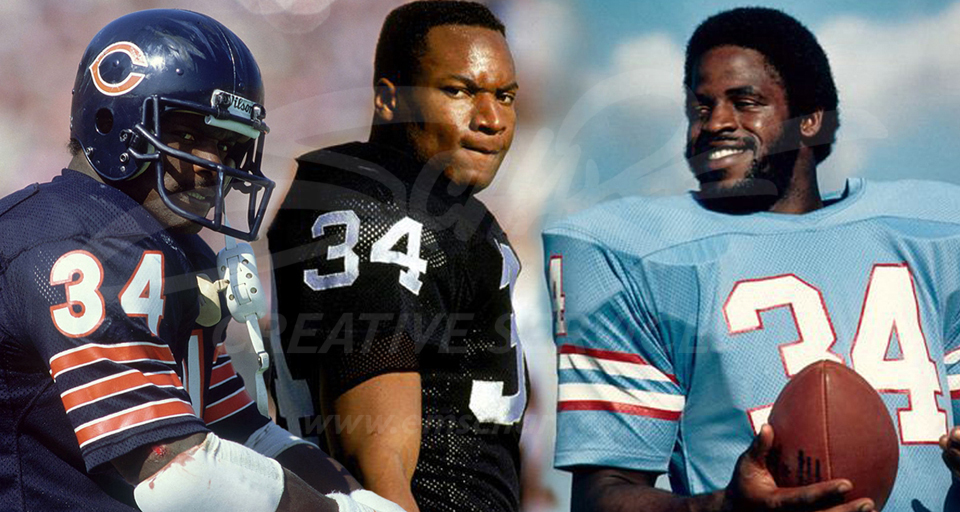
-
- The Houston Oilers’ Earl “The Tyler Rose” Campbell starred as
“The Human Wrecking Ball” in 1978 as he single-handedly demolished
the Los Angeles Rams’ defensive front . . . and nearly shattered the
sternum of linebacker Isiah “(Not So) Butch” Robertson with a
headbutt heard round-the-world. While Campbell was comparatively
short, he spent most of his career battering defenders into
tenderized runts.
When the Bears’ Walter "Sweetness" Payton was not busy deftly
outmaneuvering and anvil-smashing, err, sidearm-shivering opponents
at Soldier Field . . . he was firing his head and shoulders into
defenders like a trophy hunter pursuing an endangered species with a
successful yield.
Cleveland’s Jim Brown spent most of his amazing career simply mowing
down defenders with a body carved from granite. He almost never had
to “tip his (hardened) cap,” with so many opponents screaming
“Enough! We’ve had it!”
The San Francisco 49ers’ Roger Craig would high-step between the
tackles at Candlestick Park like a bighorn sheep on Broadway . . .
with his knees up, head down, and ready to pound out a rhythm on
every play.
The New York Giants’ Otis Anderson may have been a slow, plodding
ball-carrier, but he led with an uppercut, err, wide-swinging
forearm that successfully cleared almost any defensive crowd . . .
surely making even heavyweight boxer George Foreman proud.
Bruising ball-carriers Bo Jackson, Adrian Peterson, John Riggins,
Herschel Walker, Marshawn Lynch, Frank Gore, Brandon Jacobs, Eddie
George, Mike Alstott, and Steven Jackson would regularly (and often
successfully) attempt to truck opponents into submission – using a
combination of helmets, shoulder pads, forearms, stiff arms, and
knees – with only Marshawn Lynch still in a starting position to
deliver such a destructive thrill.
Conrad "Dominican Dracula" Dobler and Kevin "Big Nasty" Gogan and
their common "anything goes (on the offensive line)" style of play .
. . included plenty of biting, leg whips, and trips regardless of
whether officials were looking the other way.
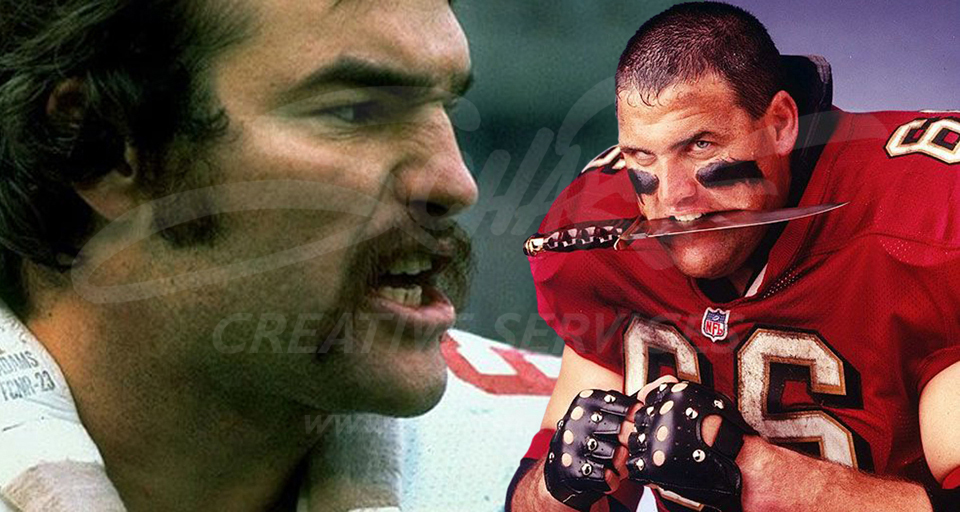
-
- Browns strong safety Felix Wright – during a 1990 playoff game in
Cleveland – upended Bills receiver Don Beebe who landed quite
uncomfortably on his head. He - to this day – is thankful not to be
dead.
During Super Bowl XXXII in 1998, the Broncos' Steve Atwater and
Randy Hilliard crashed crowns . . . with their mutual target -
Packers receiver Robert Brooks - barely ducking down.
Tampa Bay defensive tackle Warren Sapp blew up Green Bay offensive
tackle Chad Clifton in 2002, and it took that pummeled Packer over
six grueling months to prove he was not through.
Cowboys Roy "Strong Safety" Williams applied a horse collar in 2004 . . . gifting Eagles receive Terrell Owens some
unintended broken leg gore.
Cardinals receiver Anquan Boldin was helmet-hammered by Jets safety
Eric Smith in 2008. While Smith was deservedly seeing stars for the
days that would follow, Boldin came away with a sinus fracture that
– for anything more than protein shakes – made it hard to chew and
swallow.
Steelers receiver Hines Ward mercilessly mangled Bengals' linebacker
Keith Rivers in 2008 . . . and he did it again to Ravens' preeminent
ball hawk Ed Reed in 2010, shamelessly encouraging more rivalry
hate.
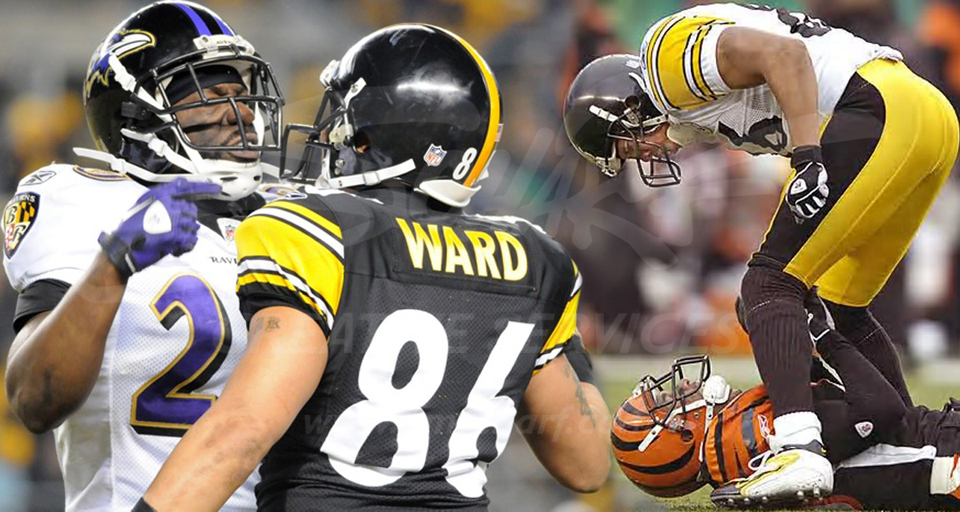
-
- Albert "Gurode Goring" Haynesworth (in 2006 against Dallas) took a
step in the wrong direction . . . while Ndomakong "Damaging
Dietrich-Smith" Suh (in 2011 against Green Bay) appeared to suffer
from the same brain infection.
Seahawks receiver Golden Tate – during a 2012 Seattle home game –
sideswiped Cowboys linebacker Sean Lee before he could zero in on
Russell Wilson. It was an understatement to say Lee pulled up lame.
Cowboys punter Chris "The Puntisher" Jones (with a mild assist from
linebacker Kyle Wilber) performed a sideline slam of Lions return
man Andre Roberts in 2016.
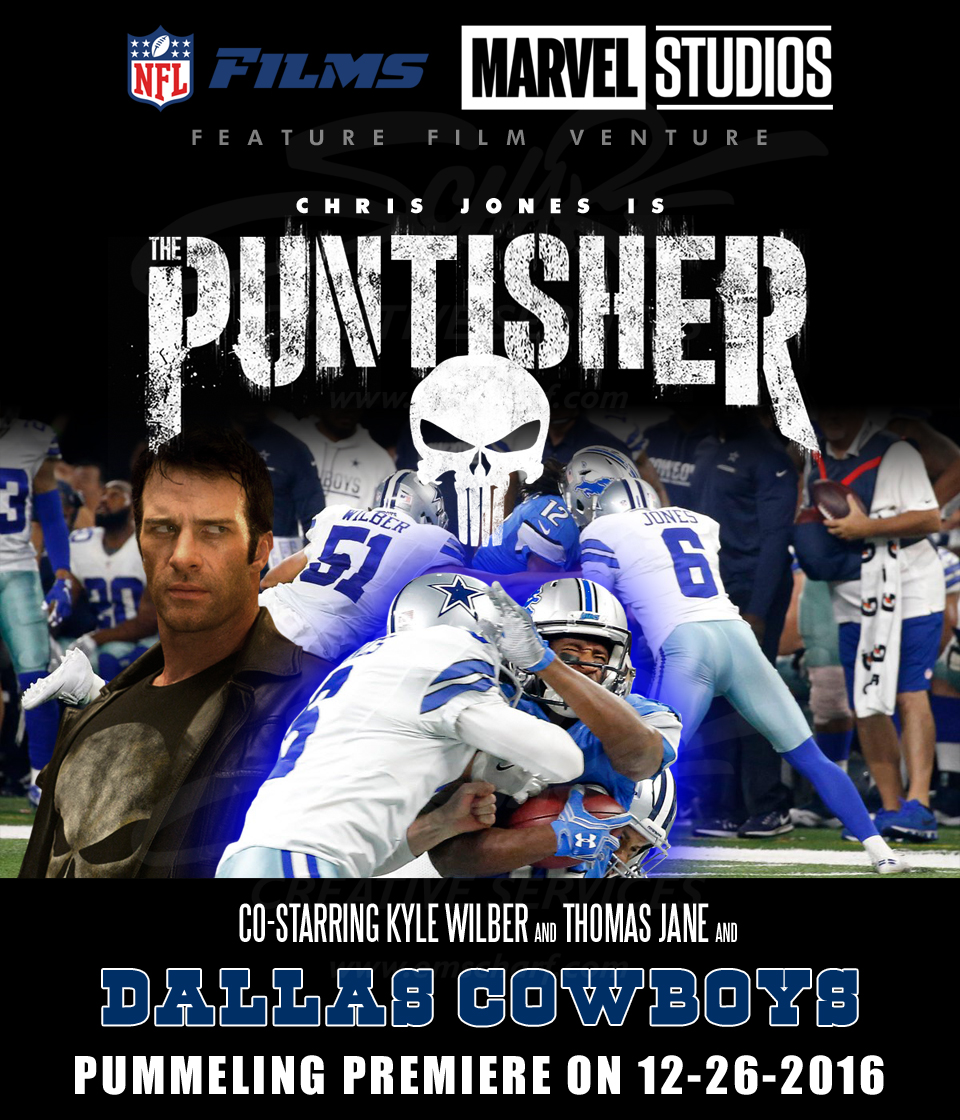
-
- And for every frustration-forced, purposeful plunge in 2017 by a
Danny Trevathan or a Vontaze Burfict . . . there is a Ryan Shazier
accident-turned-tragedy that draws even more scrutiny over the NFL’s
heads-down defect.
The number of ways in which NFL players choose to bring the pain to
each other – by relying so much on raw physique that it smothers
quality technique (or repeatedly going in a lowdown direction to
risk team-choking ejection) – are practically unending . . . and if
the NFL and NFLPA are not careful, the (increasing) fallout could be
mind-bending.
Choice
The helmet is clearly one of many tools regularly used to be
physically cruel, but the choice to increasingly use a helmet –
above all other methods – is what has (in part) triggered the
seemingly knee-jerk implementation of the NFL’s targeting rule.
The NFL Competition Committee previously introduced a defenseless
player rule. The targeting rule simply reinforces and adds a layer
to what was established for a defenseless player.
Such cataclysmic events will never entirely fade into the past,
though some would argue the majority of them must eventually
disappear for the NFL to enjoy significant growth and truly last.
The best of intentions – albeit driven by massive legal fears – have
resulted in a couple take-your-medicine rules . . . designed to
discourage any further death-defying fools.
The NFL had little choice when facing the toxic combination of (1)
players who (still) fancy themselves “Concussion Knievel’s,” (2)
exposure of the NFL’s long-pursued efforts to suppress any
connection between repeated blunt force trauma and the development
of CTE (Chronic Traumatic Encephalopathy) in any football player’s
brain . . . and (3) the unsettling conditions of the “settled”
concussion lawsuit brought by former NFL players that has added to
the league’s (current) publicity stain.
Nonetheless and following Roquan Smith’s fresh-if-indirect addition
to the NFL’s tackling tale, there very well could be a
quickly-growing number of players – whether through their own
understanding or at the urging of their agents – who would rather
insist their bonuses be shielded from their own technical laziness .
. . than make a conscious, coachable effort to rise above this
helmet craziness.
Some NFLPA members will acknowledge that – even in such a violent
sport – the choice still overrides the technique learned under years
of tutelage . . . and other union brothers will insist their
“successful methods” are being hindered by what amounts to player
safety garbage.
Quality wrap-up tackling – for years now – has been on the verge of
going the way of the dodo bird or the NBA’s intermediate jump shot
and “free throw” . . . which are blindfolded breezes for old school,
technique-heavy players but “challenging” for many of the modern
day, physically superior, and mentally or playbook slow.
Defensive players will also (somewhat privately) concede that no
longer leading with their helmets also exposes them as either
workout warriors and tackling frauds (like Vernon Gholston) or real
students of the game, true technical gods. Defenders who are not the
most coachable or possess that 3M (Minimum Magic Mix) of football
skills every NFL team seeks . . . are left to hitting opponents as
hard as possible in a cover-up effort that inevitably wreaks.
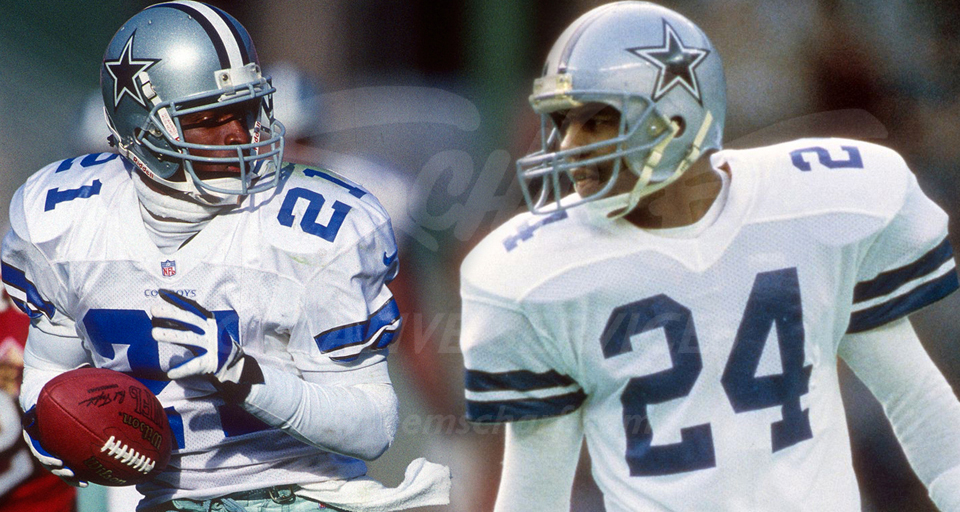
-
- For every clobbering cornerback, there was a supremely fast Deion
Sanders and a unbearably slow Everson Walls . . . both of whom
almost always managed to get to the offensively-diagramed spot
before receivers even finished digesting the play calls. They could
have been physically belligerent but – more often than not – they
chose to be more intelligent.
For every destroying defensive lineman, there was a Ed “Too Tall”
Jones . . . big and unfairly tall with a heavyweight boxer’s wing
span, who could bat down passes or reach the quarterback without
(purposely) leaving his feet (to decapitate or torpedo), and leaving
his often equally-talented teammates to pick over the bones. He
could have been physically belligerent but – more often than not –
he chose to be more intelligent.
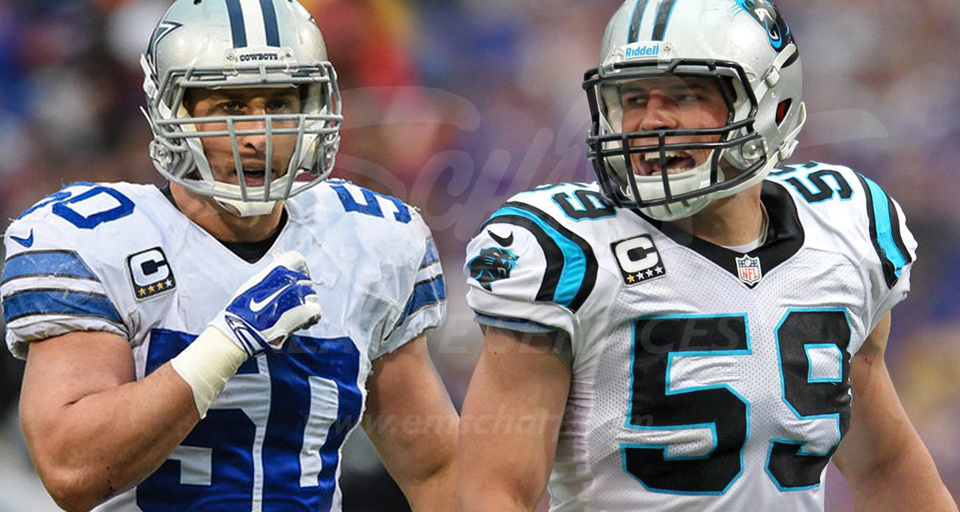
-
- For every leveling linebacker, there is a Luke Kuechly or a Sean Lee
. . . who triangulate so fast and furiously towards their targets
that opponents know it is pointless to flee. They could be
physically belligerent but – more often than not – they choose to be
more intelligent.
Offensive players – as with the current leanings of the NFL rulebook
– have a comparatively easy transformation . . . having to rely on
no more than sturdy shoulders and a solid stiff-arm to avoid
a possible suspension.
For every raucous running back, there was a Thurman Thomas, Marshall
Faulk, Tony Dorsett, Eric Dickerson, LaDainian Tomlinson, Barry
Sanders, and Emmitt Smith . . . where some cosmic combination of
body balance, vast vision, serious speed, sensational shiftiness,
and a sixth sense were far from a myth. They could have been
physically belligerent but – more often than not – they chose to be
more intelligent.
Leading with the helmet may, indeed, have been ingrained for some
players through questionable training (by some but not all coaches),
and that learned approach may well be impacted by heat-of-the-moment
fate, but the trajectory of that hard hat begins with a choice. A
change in player decisions – with a renewed focus on technical
precision – will give helmets less of a negative game day voice.
The transition will be reasonable for some, challenging for most,
and temporarily resisted by others who burn their paychecks like
toast. The end result will – of course – be left to the referees,
who might prefer to keep their controversial yellow hankies pocketed
more than most.
Will They Or Won’t They?
Will the helmet heresy become as polarizing to the fans as players
taking a knee during the singing of the national anthem?
Will players actually succumb to some kind of warped peer pressure .
. . once their drive-killing or possession-extending penalties
become too huge to measure?
Big picture believers will not be shocked if the NFL ultimately
decides to turn the other cheek on recapturing signing bonuses from
helmet-haunted players . . . with an eye towards fulfilling some
2021 CBA prayers.
Players want to keep (as much of) their bonus money (as possible)
even in the face of a horrifying hit. The NFLPA also wants marijuana
removed from the NFL’s list of banned substances, allowing players
to therapeutically get lit. Will the union go as far as sacrificing
more of the profit pie – in the form of owner-cherished stadium
credits – in order for these two key interests to fly?
Coaches and players (most but not all) have made it clear they feel
cramped by this helmet deal, but will there be significant fan
bereavement over the NFL’s crowning achievement?
Will the NFL regular season finally arrive . . . allowing eager fans
to see which teams will thrive and which will dive?
We shall see. We always do.
|